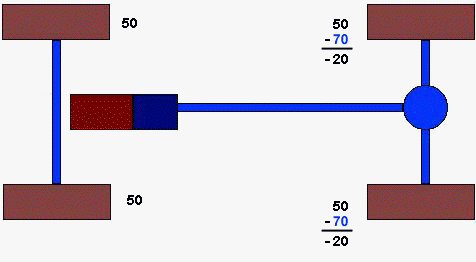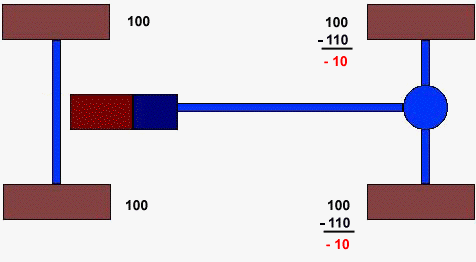Each of the 4 tires on a vehicle has traction (the friction between rubber and ground). Lets assume for argument's sake that each tire on dry surface has a traction value of 100 - a total of 400. **
In a 2WD only the traction of 2 tires (traction value 200) is used to support forward movement. Torque of the engine is using the resistance (traction) of two tires to get you moving. Lets say 140 units of torque are needed to move the car and 200 traction units support forward movement - then a safety margin of 60 units remains.

Lets say due to slippery ground the traction value drops to 50 per tire. That gives you 100 usable units on the two powered tires - but with 140 torque units necessary to move the car, your "traction account" is overdrawn by 40. Result is spinning tires and you can't get the car moving.

If for some reason (vehicle heavily loaded and a steep grade needs to be climbed) much more torque (lets say 220 units) is needed to move the vehicle. Since only 200 units of traction are available the account will be overdrawn by 20. Tires will start spinning and the vehicle will not be able to move forward.